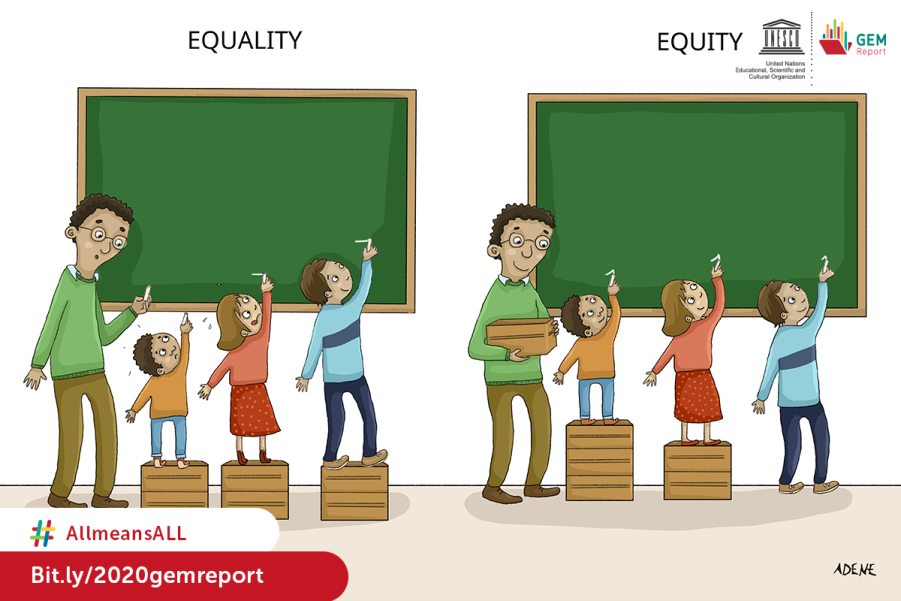
“Education is the point at which we decide whether we love the world enough to assume responsibility for it, and by the same token save it from that ruin which except for renewal, except for the coming of the new and the young, would be inevitable. And education, too, is where we decide whether we love our children enough not to expel them from our world and leave them to their own devices, nor to strike from their hands their chance of undertaking something new, something unforeseen by us, but to prepare them in advance for the task of renewing a common world.”
Hannah Arendt
Access to quality education for all children, no matter their personal circumstances, is the key for achieving equity in education.
According to UNICEF, an estimated 385 million children live in extreme poverty. Children who grow up impoverished often lack the food, sanitation, shelter, health care and education they need to survive and thrive. Across the world, about one in three children – roughly 663 million – live in households that are multidimensionally poor, meaning they lack necessities as basic as nutrition or clean water.
Even though education is an opportunity with the potential to transform lives, in the UNESCO GEM Report 2020 it is estimated that 258 million children, adolescents and youth, or 17% of the global total, are not in school. Moreover, results showed that, at the current rate, closing the gap between the poorest and the richest children will take decades.
Furthermore, according to the PISA 2018 results (1), limited social diversity in schools implies that disadvantaged students are more likely to be enrolled in schools that have disproportionately large concentrations of low achievers – which may negatively affect their performance.
In addition, American Psychological Association claims that socioeconomic status (SES) affects overall human functioning, including our physical and mental health. Research (2) indicates that children from low-SES households and communities develop academic skills slower than children from higher SES groups. For instance, low SES in childhood is related to poor cognitive development, language, memory, socioemotional processing, and consequently poor income and health in adulthood. The school systems in low-SES communities are often under resourced, negatively affecting students’ academic progress and outcomes (3). Inadequate education and increased dropout rates affect children’s academic achievement, perpetuating the low-SES status of the community.
Perpetuation of the education inequality must be stopped. Education systems have to be improved to offer each student, no matter their personal circumstance, access to quality education. For the reasons stated above, we believe that equity should be a crucial aspect of our education systems, to ensure fairness and inclusion. Equality gives each person the same. Equity gives each student what he or she needs to perform at an acceptable level.
The ARISE Action for Reducing Inequalities in Education initiative is part of a bigger strategical framework shared in the partnership, promoting equity in education in order to create the conditions to assure that socio-economic status should not be an obstacle to achieving educational potential and to overcome the effects of social deprivation.

(1) OECD, 2019. PISA 2018: Insights and Interpretations.
(2) Morgan, P. L., Farkas, G., Hillemeier, M. M., & Maczuga, S. (2009). Risk factors for learning-related behaviour problems at 24 months of age: Population-based estimates. Journal of Abnormal Child Psychology, 37, 401-413. doi:10.1007/s10802-008-9279-8
(3) Aikens, N. L., & Barbarin, O. (2008). Socioeconomic differences in reading trajectories: The contribution of family, neighbourhood, and school contexts. Journal of Educational Psychology, 100, 235-251. http://dx.doi.org/10.1037/0022-0663.100.2.235